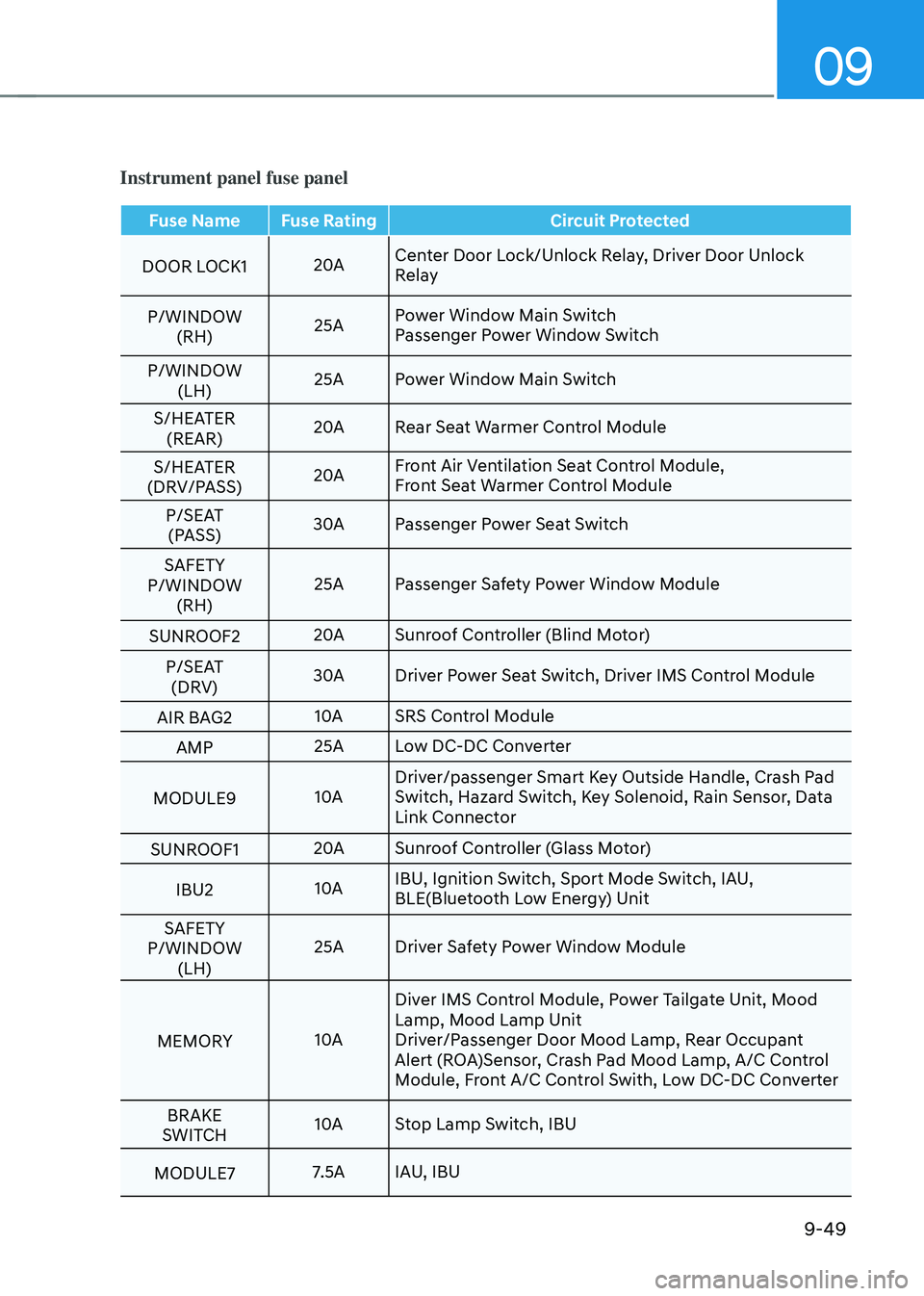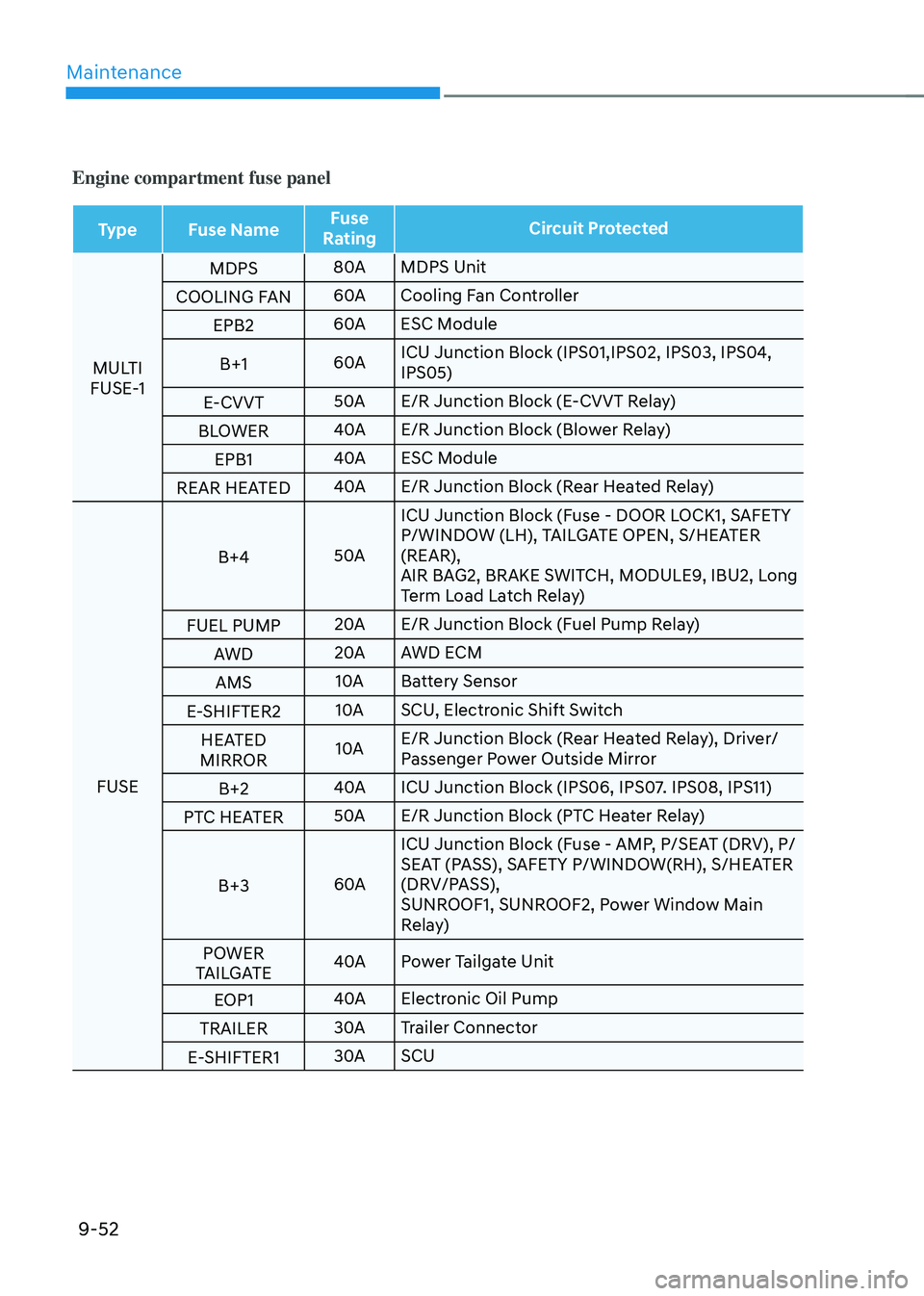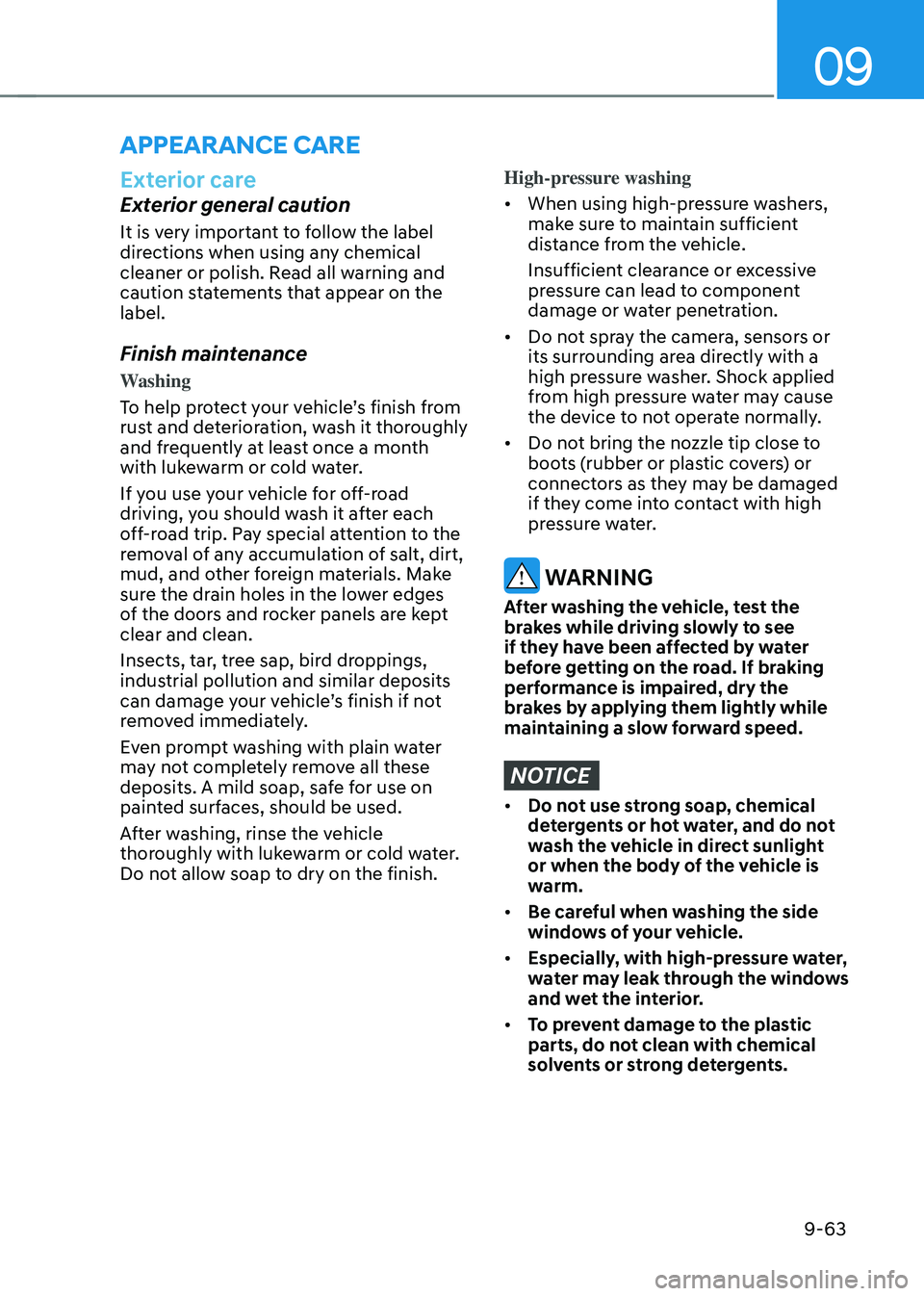Page 539 of 638

08
8-13
If the indicators do not extinguish after a
few minutes, please visit an authorized
HYUNDAI dealer.
Each wheel is equipped with a tire
pressure sensor mounted inside the tire
behind the valve stem (except for the
spare tire). You must use TPMS specific
wheels. It is recommended that you
always have your tires serviced by an
authorized HYUNDAI dealer.
You may not be able to identify a tire
with low pressure by simply looking at it.
Always use a good quality tire pressure
gauge to measure. Please note that a tire
that is hot (from being driven) will have a
higher pressure measurement than a tire
that is cold.
A cold tire means the vehicle has been
sitting for 3 hours and driven for less
than 1 mile (1.6 km) in that 3 hour period.
Allow the tire to cool before measuring
the inflation pressure. Always be sure
the tire is cold before inflating to the
recommended pressure.
WARNING
• The TPMS cannot alert you to severe
and sudden tire damage caused by
external factors such as nails or road
debris.
• If you feel any vehicle instability,
immediately take your foot off
the accelerator, apply the brakes
gradually with light force, and slowly
move to a safe position off the road.
WARNING
Tampering with, modifying, or disabling
the Tire Pressure Monitoring System
(TPMS) components may interfere
with the system’s ability to warn the
driver of low tire pressure conditions
and/or TPMS malfunctions. Tampering
with, modifying, or disabling the Tire
Pressure Monitoring System (TPMS)
components may void the warranty for
that portion of the vehicle.
Information
This device complies with Part 15 of the
FCC rules.
Operation is subject to the following three
conditions:
1. This device may not cause harmful
interference.
2. This device must accept any
interference received, including
interference that may cause undesired
operation.
3. Changes or modifications not expressly
approved by the party responsible
for compliance could void the user’s
authority to operate the equipment.
Page 599 of 638

09
9-49
Instrument panel fuse panel
Fuse NameFuse Rating Circuit Protected
DOOR LOCK1 20ACenter Door Lock/Unlock Relay, Driver Door Unlock
Relay
P/WINDOW (RH) 25A
Power Window Main Switch
Passenger Power Window Switch
P/WINDOW (LH) 25A
Power Window Main Switch
S/HEATER (REAR) 20A
Rear Seat Warmer Control Module
S/HEATER
(DRV/PASS) 20A
Front Air Ventilation Seat Control Module,
Front Seat Warmer Control Module
P/SEAT (PASS) 30A
Passenger Power Seat Switch
SAFETY
P/WINDOW (RH) 25A
Passenger Safety Power Window Module
SUNROOF2 20A
Sunroof Controller (Blind Motor)
P/SEAT (DRV) 30A
Driver Power Seat Switch, Driver IMS Control Module
AIR BAG2 10A
SRS Control Module
AMP 25A
Low DC-DC Converter
MODULE9 10ADriver/passenger Smart Key Outside Handle, Crash Pad
Switch, Hazard Switch, Key Solenoid, Rain Sensor, Data
Link Connector
SUNROOF1 20A
Sunroof Controller (Glass Motor)
IBU2 10AIBU, Ignition Switch, Sport Mode Switch, IAU,
BLE(Bluetooth Low Energy) Unit
SAFETY
P/WINDOW (LH) 25A
Driver Safety Power Window Module
MEMORY 10ADiver IMS Control Module, Power Tailgate Unit, Mood
Lamp, Mood Lamp Unit
Driver/Passenger Door Mood Lamp, Rear Occupant
Alert (ROA)Sensor, Crash Pad Mood Lamp, A/C Control
Module, Front A/C Control Swith, Low DC-DC Converter
BRAKE
SWITCH 10A
Stop Lamp Switch, IBU
MODULE7 7.5A
IAU, IBU
Page 602 of 638

Maintenance
9-52
Engine compartment fuse panel
TypeFuse Name Fuse
Rating Circuit Protected
MULTI
FUSE-1 MDPS
80A
MDPS Unit
COOLING FAN 60A
Cooling Fan Controller
EPB2 60A
ESC Module
B+1 60AICU Junction Block (IPS01,IPS02, IPS03, IPS04,
IPS05)
E-CVVT 50A
E/R Junction Block (E-CVVT Relay)
BLOWER 40A
E/R Junction Block (Blower Relay)
EPB1 40A
ESC Module
REAR HEATED 40A
E/R Junction Block (Rear Heated Relay)
FUSE B+4
50AICU Junction Block (Fuse - DOOR LOCK1, SAFETY
P/WINDOW (LH), TAILGATE OPEN, S/HEATER
(REAR),
AIR BAG2, BRAKE SWITCH, MODULE9, IBU2, Long
Term Load Latch Relay)
FUEL PUMP 20A
E/R Junction Block (Fuel Pump Relay)
AWD 20A
AWD ECM
AMS 10A
Battery Sensor
E-SHIFTER2 10A
SCU, Electronic Shift Switch
HEATED
MIRROR 10A
E/R Junction Block (Rear Heated Relay), Driver/
Passenger Power Outside Mirror
B+2 40A
ICU Junction Block (IPS06, IPS07. IPS08, IPS11)
PTC HEATER 50A
E/R Junction Block (PTC Heater Relay)
B+3 60AICU Junction Block (Fuse - AMP, P/SEAT (DRV), P/
SEAT (PASS), SAFETY P/WINDOW(RH), S/HEATER
(DRV/PASS),
SUNROOF1, SUNROOF2, Power Window Main
Relay)
POWER
TAILGATE 40A
Power Tailgate Unit
EOP1 40A
Electronic Oil Pump
TRAILER 30A
Trailer Connector
E-SHIFTER1 30A
SCU
Page 613 of 638

09
9-63
Exterior care
Exterior general caution
It is very important to follow the label
directions when using any chemical
cleaner or polish. Read all warning and
caution statements that appear on the
label.
Finish maintenance
Washing
To help protect your vehicle’s finish from
rust and deterioration, wash it thoroughly
and frequently at least once a month
with lukewarm or cold water.
If you use your vehicle for off-road
driving, you should wash it after each
off-road trip. Pay special attention to the
removal of any accumulation of salt, dirt,
mud, and other foreign materials. Make
sure the drain holes in the lower edges
of the doors and rocker panels are kept
clear and clean.
Insects, tar, tree sap, bird droppings,
industrial pollution and similar deposits
can damage your vehicle’s finish if not
removed immediately.
Even prompt washing with plain water
may not completely remove all these
deposits. A mild soap, safe for use on
painted surfaces, should be used.
After washing, rinse the vehicle
thoroughly with lukewarm or cold water.
Do not allow soap to dry on the finish.
High-pressure washing
• When using high-pressure washers,
make sure to maintain sufficient
distance from the vehicle.
Insufficient clearance or excessive
pressure can lead to component
damage or water penetration.
• Do not spray the camera, sensors or
its surrounding area directly with a
high pressure washer. Shock applied
from high pressure water may cause
the device to not operate normally.
• Do not bring the nozzle tip close to
boots (rubber or plastic covers) or
connectors as they may be damaged
if they come into contact with high
pressure water.
WARNING
After washing the vehicle, test the
brakes while driving slowly to see
if they have been affected by water
before getting on the road. If braking
performance is impaired, dry the
brakes by applying them lightly while
maintaining a slow forward speed.
NOTICE
• Do not use strong soap, chemical
detergents or hot water, and do not
wash the vehicle in direct sunlight
or when the body of the vehicle is
warm.
• Be careful when washing the side
windows of your vehicle.
• Especially, with high-pressure water,
water may leak through the windows
and wet the interior.
• To prevent damage to the plastic
parts, do not clean with chemical
solvents or strong detergents.
APPEARANCE CARE
Page:
< prev 1-8 9-16 17-24